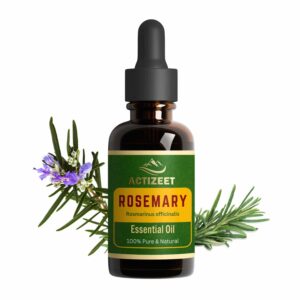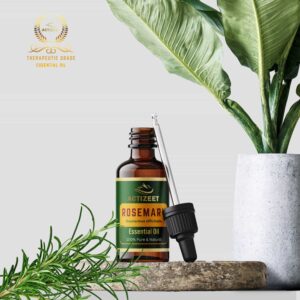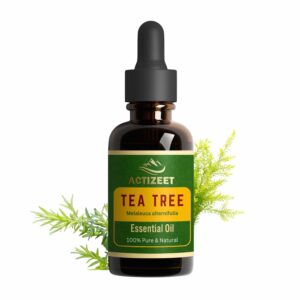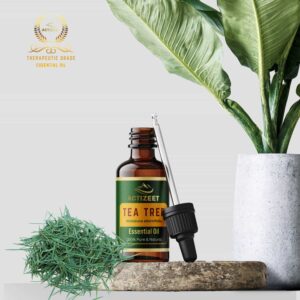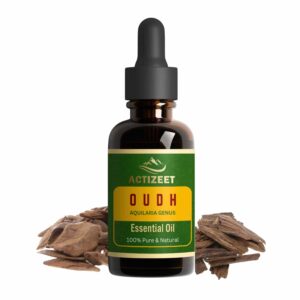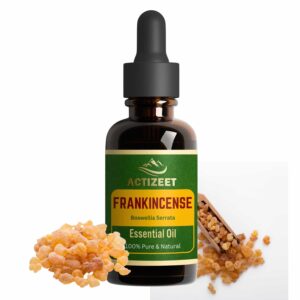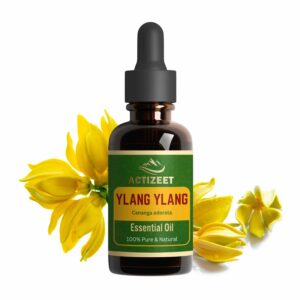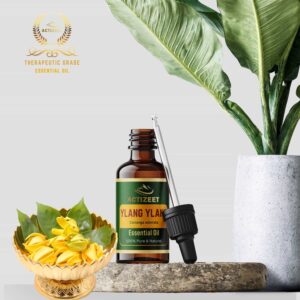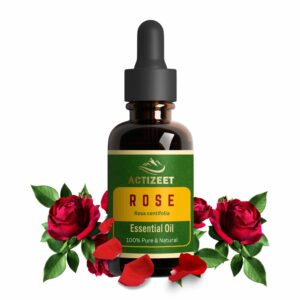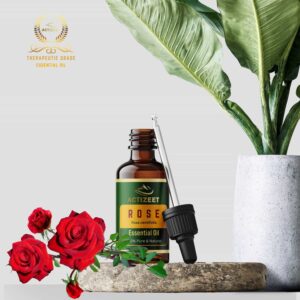When we talk about essential oils, we refer to highly concentrated plant extracts that capture the very essence of the plant they are derived from. These oils are often obtained through various extraction methods, such as distillation, expression, or solvent extraction.
The result is a potent liquid that contains the aromatic compounds responsible for the characteristic scent of the plant. The origin of essential oils can be traced back centuries, with early civilizations recognizing the power of these natural fragrances.
Ancient Egyptians were among the first to utilize essential oils in their daily lives, using them in perfumes, cosmetics, and religious rituals. They believed that these aromatic oils possessed mystical properties capable of healing both physical and spiritual ailments.
Table of Contents
ToggleHistory of Using Essential Oils for Fragrance
As time went on, different cultures across the world began harnessing the power of essential oils for fragrance purposes. In ancient Greece and Rome, essential oils gained popularity as luxurious scents used by nobles and aristocrats.
The Greeks even associated specific fragrances with their gods and goddesses. During the Middle Ages in Europe, essential oils continued to be utilized for their pleasing aromas.
They played a significant role in masking unpleasant odours caused by unsanitary conditions prevalent at that time. It wasn’t until much later, during the Renaissance period, that perfumery became a refined art form, with dedicated perfumers creating complex fragrances using essential oils.
Essential oils have remained popular throughout history due to their ability to evoke emotions and create unique sensory experiences. Today, they are widely used in both commercial perfumes and homemade fragrances due to their natural origins and diverse range of scents available.
Understanding Essential Oils
Extraction Methods: Distillation, Expression, Solvent Extraction
When it comes to obtaining those precious aromatic essences from plants, there are a few methods that have stood the test of time. One of the most common extraction techniques is distillation. This involves using heat to vaporize the volatile compounds in the plant material and then condensing them back into liquid form.
It’s like capturing the very essence of nature in a bottle! Distillation is particularly suitable for plants with high oil content, such as lavender or peppermint.
Expression, on the other hand, takes a more direct approach. Citrus fruits are often used in this method because their peels contain abundant essential oils.
The fruit is squeezed or pressed to release its fragrant oils, which are then separated from the juice and other components. This process yields bright and refreshing scents like lemon or orange.
For some delicate flowers or plant materials that don’t respond well to distillation or expression, solvent extraction comes into play. Here, solvents like hexane or ethanol are used to dissolve the essential oils from the plant matter.
Once extracted, the solvents evaporate, leaving behind concentrated fragrance oils. However, it’s important to note that this method can sometimes result in residual solvent traces if not carefully managed.
Types of Essential Oils: Citrus, Floral, Woody, Spicy, Herbal
Essential oils come in a delightful array of aromatic categories. Let’s start with citrus essential oils—the zesty and invigorating ones!
Extracted primarily from citrus fruits like lemon (Citrus limon), orange (Citrus sinensis), and bergamot (Citrus bergamia), these oils offer uplifting scents that energize your senses and bring a burst of freshness to any fragrance blend. Moving on to floral essential oils, we encounter the captivating aromas of rose (Rosa damascena), lavender (Lavandula angustifolia), and jasmine (Jasminum grandiflorum).
These oils carry the enchanting essence of flowers, evoking feelings of romance and tranquillity. They are often used as heart notes in perfumes, adding depth and complexity to the overall fragrance composition.
If you’re more inclined towards earthy scents, woody essential oils might be your cup of tea. Cedarwood (Cedrus atlantica), sandalwood (Santalum album), and patchouli (Pogostemon cablin) fall into this category.
They offer warm and grounding notes that bring a sense of stability to perfumes or colognes. Woody essential oils are commonly used as base notes, providing a solid foundation for other fragrant components.
Not to be forgotten are the spicy essential oils that add a touch of exotic allure to any blend. Cinnamon (Cinnamomum zeylanicum), clove (Syzygium aromaticum), and cardamom (Elettaria cardamomum) fall under this category.
Their rich and warm aromas lend themselves well to creating unique and intriguing fragrance combinations. We have herbal essential oils, derived from plants like basil (Ocimum basilicum), thyme (Thymus vulgaris), or peppermint (Mentha × piperita).
These oils offer a fresh and invigorating scent profile, reminiscent of nature’s herb gardens. Herbal essences can add a vibrant twist to fragrances or provide a cooling effect in skincare products like balms or lotions.
Factors Influencing the Quality of Essential Oils: Plant Species, Growing Conditions, Harvesting Time
The quality of essential oils is influenced by several factors that impact both their scent profile and therapeutic properties. Firstly, the plant species used plays a vital role.
Each plant has its own unique chemical composition, resulting in distinctive fragrances and varying therapeutic benefits. For example, lavender essential oil (Lavandula angustifolia) has a calming effect on the mind and body, while eucalyptus essential oil (Eucalyptus globulus) is known for its invigorating properties.
The growing conditions of plants also contribute to the overall quality of essential oils. Factors such as soil quality, climate, altitude, and exposure to sunlight all affect the plant’s development and subsequently impact the aroma and potency of its essential oil.
For instance, roses grown in optimal conditions with ample sunlight tend to produce more vibrant and fragrant oils compared to those grown under less favorable circumstances. Additionally, harvesting time is crucial in obtaining high-quality essential oils.
Different plants reach their peak aromatic potential at various stages of growth or flowering. Harvesting too early or too late can lead to a less desirable fragrance profile or diminished therapeutic qualities.
Careful timing ensures that essential oils capture the essence of plants at their aromatic zenith. Understanding these factors helps us appreciate why not all essential oils are created equal.
The interplay between plant species, growing conditions, and harvesting time contributes to the nuanced scents and therapeutic properties that make each essential oil unique. So when choosing your preferred fragrance companion, remember that quality is key!
Popular Essential Oils for Fragrance
Citrus Essential Oils: Lemon, Orange, Bergamot
When it comes to invigorating and refreshing scents, citrus essential oils take the crown. Lemon essential oil is zesty and tangy, encapsulating the essence of freshly squeezed lemons. Its bright and uplifting aroma brings a burst of energy and is commonly used to combat fatigue and lift spirits.
Orange essential oil, on the other hand, offers a sweet and juicy fragrance reminiscent of freshly peeled oranges. It exudes a warm and comforting vibe that helps alleviate stress and anxiety, making it perfect for aromatherapy.
Bergamot essential oil boasts a unique citrus scent with subtle floral undertones. Its fruity aroma, combined with hints of spice, creates a sophisticated fragrance that promotes relaxation and mental clarity.
These citrus oils are incredibly versatile in perfumery due to their vibrant scents, which can enhance any fragrance composition. They are often used as top notes in perfumes to provide an initial burst of freshness that awakens the senses.
In aromatherapy, they are cherished for their ability to uplift moods, improve focus, and promote feelings of joy. Citrus essential oils can be diffused into the air or applied topically (diluted) for a refreshing boost throughout the day.
Floral Essential Oils: Rose, Lavender and Jasmine
Floral essential oils bring an air of elegance and romance with their captivating scents. Rose essential oil is renowned for its luxurious fragrance that captures the essence of blooming roses in full bloom. It delivers a richly floral aroma with soft notes of sweetness which evokes feelings of love and serenity.
Lavender essential oil embodies tranquillity with its soothing herbal scent that has hints of fresh flowers intertwined with earthy undertones. Its calming properties make it ideal for promoting relaxation and aiding in sleep.
Jasmine essential oil boasts an intoxicatingly sweet and floral aroma that is both exotic and alluring. Its fragrance is deeply captivating, and often associated with passion and sensuality.
These floral essential oils are highly valued in perfumery for their ability to add depth, complexity, and a touch of femininity to fragrances. Rose, lavender, and jasmine are commonly used as heart or middle notes due to their long-lasting scents.
They lend a delicate yet distinctive character to perfumes, leaving a lasting impression on the senses. Their therapeutic benefits extend beyond scent, as they are often incorporated into relaxation rituals, massage oils, or bath products to create a soothing ambience that promotes self-care and overall well-being.
Woody Essential Oils: Cedarwood, Sandalwood and Patchouli
If you prefer fragrances that exude warmth, richness, and earthiness, woody essential oils are the perfect choice. Cedarwood essential oil offers a woody scent reminiscent of the great outdoors with notes of resinous sweetness. Its aromatic profile evokes images of towering cedar trees in ancient forests.
Sandalwood essential oil has an incredibly smooth and creamy fragrance with warm undertones of woodiness that create a sense of serenity when inhaled. Known for its grounding properties and ability to induce relaxation during meditation or yoga practices.
Patchouli essential oil is distinctively musky with an earthy aroma that can transport you to lush green forests after rainfall. Its deep scent profile carries undertones of sweetness which impart a sense of mystery.
Woody essential oils excel as base notes in perfumery due to their longevity on the skin. They provide stability while adding depth and warmth to fragrance compositions.
In addition to perfumery applications, these oils have been traditionally used for their grounding properties in spiritual practices like incense burning or aromatherapy sessions focused on achieving inner balance and harmony. Their comforting and grounding scents make them perfect for creating a cosy atmosphere in the home or during moments of self-reflection.
Unique Essential Oils for Fragrance
Ambrette Seed Oil
Ambrette seed oil, derived from the seeds of the Abelmoschus moschatus plant, is a unique essential oil that is not commonly used in modern perfumery. What makes this oil truly distinctive is its extraction process, which involves utilizing musk deer gland secretions. These secretions are collected and processed to create a fragrance that possesses a musky, slightly floral aroma.
Unfortunately, due to ethical concerns surrounding animal welfare, the use of ambrette seed oil has significantly declined in recent years. The extraction process involving musk deer glands raises questions about sustainability and cruelty-free practices.
As a result, many perfumers have chosen to avoid using this particular essential oil in their formulations. However, it’s important to note that synthetic alternatives with similar scent profiles are now available as a more ethical alternative for those seeking the unique fragrance of ambrette seed oil.
Orris Root Oil
Orris root oil is an exceptional essential oil highly sought after for its powdery scent and ability to add depth to fragrances. It is derived from the dried rhizomes of various iris species, primarily Iris germanica and Iris pallida.
The extraction process involves carefully harvesting these rhizomes, and drying them for several years until their full aromatic potential is unlocked. Once distilled, orris root oil offers a delicate yet distinct fragrance characterized by earthy and floral notes.
Its powdery aroma adds an air of elegance and sophistication when used in perfumes or colognes. Perfumers often utilize orris root oil as a fixative due to its ability to enhance other scents while imparting its own unique character.
However, it’s worth noting that obtaining orris root oil can be quite costly and time-consuming due to the extensive cultivation and ageing process. It’s a rarity, and labour-intensive production contributes to its high market value, making it a treasured ingredient among perfumers and fragrance enthusiasts alike.
While ambrette seed oil and orris root oil may not be as widely used as more popular essential oils, they possess distinctive qualities that set them apart. Ambrette seed oil’s musky and floral aroma, though rarely utilized due to ethical concerns surrounding animal welfare, offers an unconventional olfactory experience.
On the other hand, orris root oil’s powdery scent, derived from aged iris rhizomes, adds depth and sophistication to fragrances. Despite their limited use in modern perfumery, these unique essential oils continue to captivate those seeking distinctive aromas in their fragrance collections.
Essential Oil Blending Techniques
Top note blending strategies
When it comes to crafting the perfect fragrance using essential oils, one essential technique is to focus on the top notes. These scents are the first ones you’ll notice when you apply perfume or smell an aroma. They are light, refreshing, and have a tendency to evaporate quickly.
To create a well-balanced and invigorating fragrance, it’s important to select complementary top notes that can harmonize together. For example, combining zesty citrus oils like lemon or bergamot with herbal scents like peppermint or eucalyptus can create a revitalizing and uplifting experience.
Middle note blending techniques
Moving beyond the initial burst of top notes, middle notes play a crucial role in adding depth and complexity to your fragrance blend. These scents emerge shortly after the top notes fade away and can linger for hours.
When selecting middle notes for your essential oil blend, consider options such as floral scents like rose or jasmine, earthy aromas like patchouli or vetiver, or even spicy fragrances like clove or cinnamon. Experimenting with different combinations of these middle notes allows you to create unique olfactory experiences that enchant those who catch a whiff of your scent.
Conclusion
In the captivating world of essential oil blending for fragrance, there is no limit to the aromatic symphonies one can create. By understanding the art of selecting complementary scents that evaporate quickly as top notes while ensuring an enchanting depth with middle note blends, you have unlocked the secret to crafting truly remarkable fragrances. So go forth and experiment with different combinations; let your creativity flow along with these beautiful aromas.
Embrace this sensory journey as it takes you on an adventure filled with delightful discoveries and endless possibilities for self-expression. The world awaits your signature scent—one that will captivate hearts and leave a lasting impression.
RECOMANDED PRODUCTS
-
Rated 4.72 out of 5
₹1,500.00Original price was: ₹1,500.00.₹1,200.00Current price is: ₹1,200.00. Incl. GST ADD TO CARTBuy Now -
Rated 4.88 out of 5
₹1,500.00Original price was: ₹1,500.00.₹1,200.00Current price is: ₹1,200.00. Incl. GST ADD TO CARTBuy Now -
Rated 4.74 out of 5
₹1,500.00Original price was: ₹1,500.00.₹1,200.00Current price is: ₹1,200.00. Incl. GST ADD TO CARTBuy Now -
Rated 4.63 out of 5
₹1,900.00Original price was: ₹1,900.00.₹1,450.00Current price is: ₹1,450.00. Incl. GST ADD TO CARTBuy Now -
Rated 4.72 out of 5
₹2,500.00Original price was: ₹2,500.00.₹1,950.00Current price is: ₹1,950.00. Incl. GST ADD TO CARTBuy Now -
Rated 4.88 out of 5
₹1,500.00Original price was: ₹1,500.00.₹1,200.00Current price is: ₹1,200.00. Incl. GST ADD TO CARTBuy Now -
Rated 4.80 out of 5
₹1,500.00Original price was: ₹1,500.00.₹1,200.00Current price is: ₹1,200.00. Incl. GST ADD TO CARTBuy Now -
Rated 4.88 out of 5
₹1,500.00Original price was: ₹1,500.00.₹1,200.00Current price is: ₹1,200.00. Incl. GST ADD TO CARTBuy Now
Related posts:
- Unlocking the Aromatic Power: Essential Oil as Perfume
- Discover the Healing Benefits of Essential Oil Aromatherapy
- Unleashing the Power of Citronella: A Comprehensive Guide to Its Essential Oil Benefits
- Rejuvenate with Essential Oil: Transform Your Bathing Experience
- Essential Oil and Water: A Harmonious Blend?
- Unleashing the Power of Lemon Essential Oil: A Comprehensive Guide to Wellness, Beauty, and Household Benefits
- Nourish Your Hair: Benefits of Using Essential Oils
- The Power of Basil Essential Oil: Benefits and Significance


